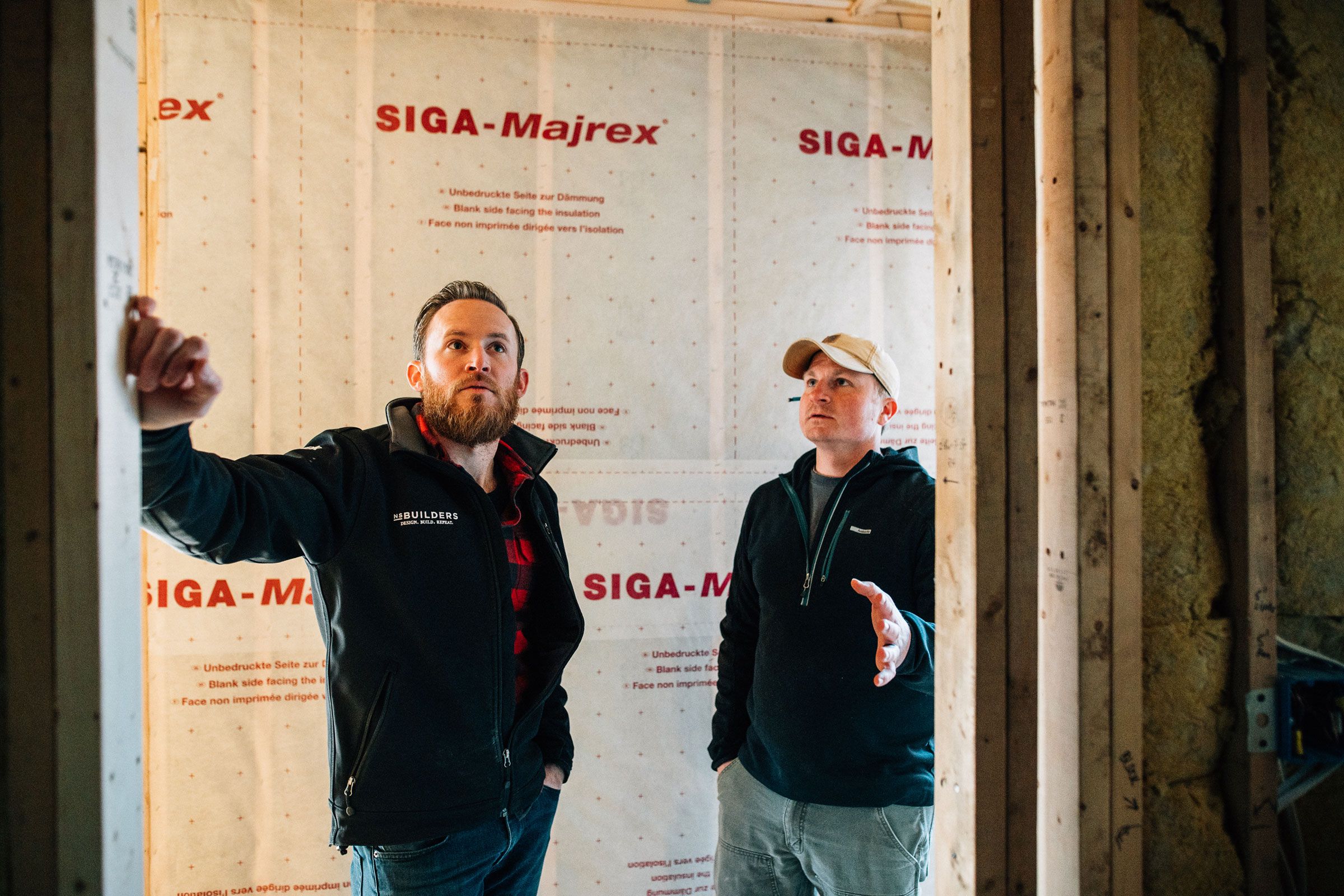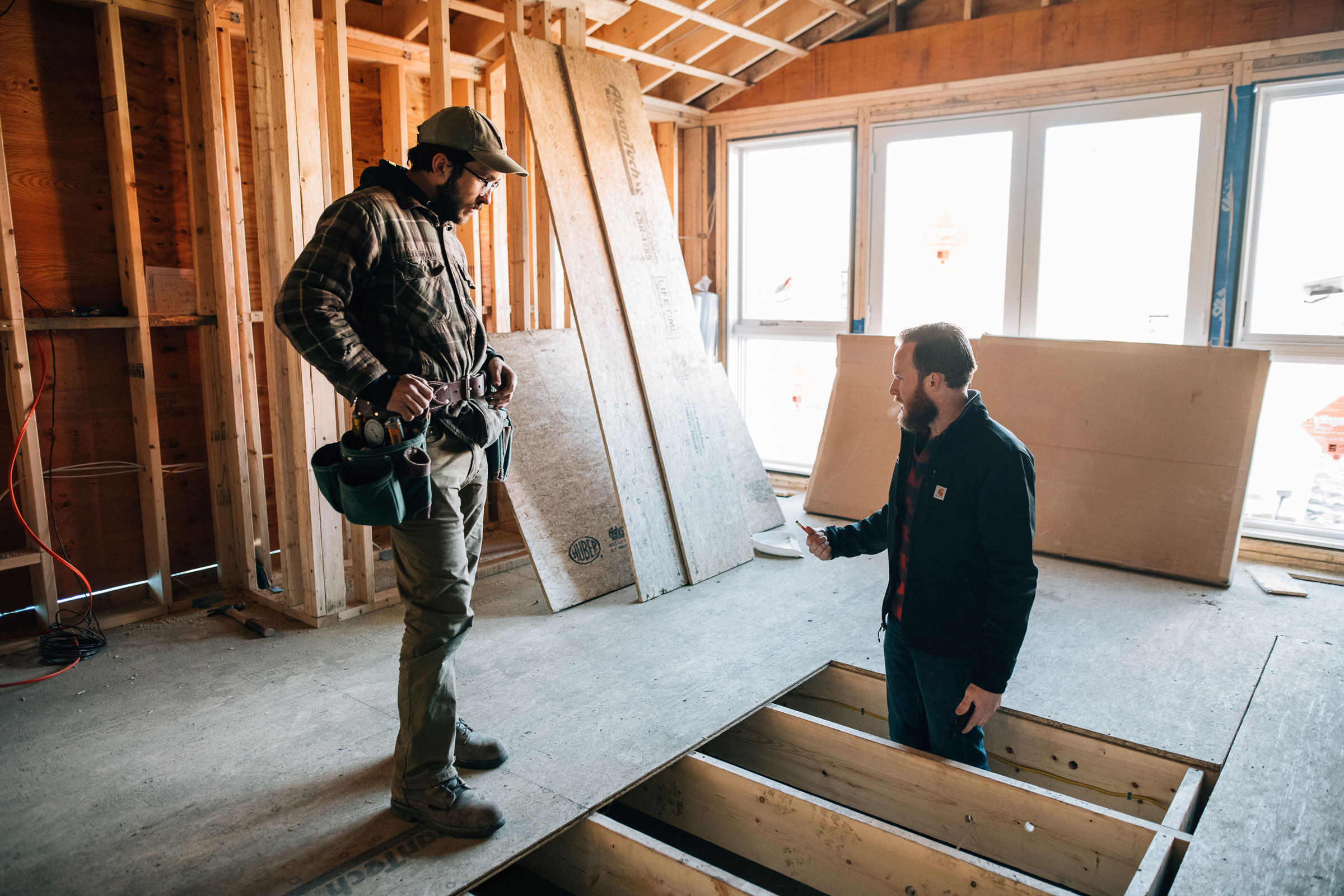Story at a glance:
- High-performance buildings start with good design.
- But performance ultimately requires builders educated in high-performance construction.
- ROCKWOOL is a leader in promoting building science principles among all building pros, including builders who bring high-performance designs to life.
Builder education has come a long way in recent generations. A lot of guys in my trade started as apprentices or learned from their fathers. That still happens a lot, and those builders are learning from pros with hard-earned, on-the-job experience. That kind of knowledge is invaluable and can’t be properly replicated at any trade school. But things are changing. Builders today need to keep pace with advances in building science if they want to compete for jobs.
A surging demand for high-performance buildings—both commercial and residential—means everyone in the process must have the knowledge and capability to execute to a higher standard. Architects and engineers are creating designs for high-performance buildings that are setting new benchmarks for sustainability, comfort, safety, and durability—but those plans are only as good as the execution. They need to rely on builders to bring the building science principles and techniques to life on the job site. If those builders aren’t capable, the building will fail to meet its objectives.
When Code was King
We can no longer rely on that tribal knowledge to guide builders of this generation, nor can we rely on code. The industry relied on code for generations to drive builder awareness and understanding of the basic building principles required in new construction and retrofits. Don’t get me wrong. Building codes have come a long way, especially in light of the pressures created by climate change to improve energy efficiency. But this shift is creating a gap between builders—those who recognize and value the investment (both time and financial) to educate themselves and their crews in order to build high-performance structures, and those who will continue to do the bare minimum to follow code and build as cheaply as possible.
Builders who choose to compete in the high-performance arena need to be aware of the many building science principles and certification programs that are driving design. Passive House and Net Zero builds are not yet seen everywhere; we can debate the affordability of meeting strict certification criteria another time. But even if certification isn’t the goal, many architects and engineers are using the same principles in their designs, as reaching 95% of performance goals is often considered “good enough” for owners. And you know that in most regions around the country, building codes don’t come close to meeting those standards.
The demand is coming from many sources, including policy makers driving for global reduction of greenhouse gas emissions and owners and property managers who want improved comfort and performance to meet occupants’ needs. But the best high-performance plans in the world don’t mean anything if there isn’t a builder on the project team who can execute them.
I, for one, appreciate this shift. I see nothing but opportunity—for myself as a builder and for society as a whole. I don’t get scared by the prospect of architects and engineers doing their part by creating innovative designs that are meeting these targets and beyond, even if it means introducing strategies that are new to me and my crew. I understand that some people might not feel the same way, so let’s try to demystify what’s required of builders who want to up their game and compete.

Photo by Todd Wilson Images
3 Principles Builders Should Embrace for High-Performance Designs
Building high-performance structures isn’t rocket science, though it may seem like it at first. Builders need to be willing to:
1. Understand the building science behind the assemblies—whether it’s strategies for tightening the building envelope without creating other problems related to air or vapor movement, or installing high-tech systems to reduce the energy demand from the building.
2. Source the right materials to support the desired performance of the assemblies. Builders have a tendency to use materials they are comfortable with, but design specifications may call for something else; unfamiliarity breeds discomfort and resistance, and there’s no room for that here.
3. Hire construction crews with the capability to execute the assemblies using new techniques and/or materials—more challenging today in light of labor sourcing issues, but there is a solution for that.
Will all builders follow this trend? No. There will always be those who think about cost first and using code to guide them—doing the bare minimum. But there are more and more of us embracing high-performance building strategies and techniques who want to partner with other pros with a shared vision. And the industry is taking notice. I built my business and assembled an incredible crew to do this, and I know other builders are watching us to learn and take a similar approach.
Case Studies
Let me tell you about a few projects we have underway where high-performance strategies are being used.
For our Rhode Island project, owner/architect Julia Nugent approached us with the idea of building a home that could meet Passive House standards though not be certified. She also wanted to be super intentional with materials—like reducing the use of foam-based products—which is why we ended up working with Rockwool for both interior and exterior insulations, along with a continuous control layer around the entire home allowing us to pass the ”pen test” and create a truly airtight home.
Our Needham project is not a passive level home but incredibly complex when it comes to the structural engineering and framing, making the envelope more complicated to be continuous. But we’re still approaching our build practices the same way. We want to always aim as high as possible, looking to achieve the very best product we can, and the only way we’re able to do that is by working alongside the professionals in the industry who can help guide/engineer what that product looks like.
A back bay renovation project, the lower unit in a four-unit brownstone, and sharing common walls and ceilings make controlling the interior space more complex. We’re focused on what we can control, making the home more airtight and ventilated correctly.
I create content across various channels to share our learnings from these projects and to inspire and educate other builders. Whether it’s social media, my podcast—The Modern Craftsman—or aligning myself with industry partners—like the Contractors Coalition Summit—to support education initiatives, advancing the capabilities of my building colleagues is a priority for me.

Photo by Todd Wilson Images
Opportunities are Everywhere
I’m not the only guy in the business doing this. There are a lot of other high-profile builders who have created platforms for sharing their knowledge and practical advice with others.The industry is doing its part, too. I think the services some building material companies provide is essential for our industry to keep pace with these increasing demands. It used to be an occasional lunch-and-learn or a site visit from a rep to drop off a technical spec sheet, but they are upping their game as well—all with a shared vision to enhance the capabilities of builders.
One company doing this especially well is ROCKWOOL. People who follow me know I’m a fan. I’ve been using stone wool insulation products in my builds for years because I know it’s a high-performance product that supports increased demands for durability, thermal performance, fire safety, and more. That’s a topic for another time. When it comes to builder education though, these guys know what they are doing and are setting a great example that other companies could be following.
Is it just because they want to sell more insulation? Well, yeah, of course. But they also know it’s in their best interest to make sure everyone in the design-build process knows why and how to use their products properly and effectively in high-performance projects. You could ask them about all of this, but ROCKWOOL cares about sustainability and how the built environment contributes to addressing the climate change crisis. They know promoting building science principles—among architects, engineers, and builders—is required if we want any chance of meeting goals to reduce GHG emissions.
How ROCKWOOL Supports the Industry
Last year ROCKWOOL introduced its R-Class Builder Program. It’s an extension of their long-term efforts to support the building industry with education and technical support. Full disclosure: I’m one of the faces of the R-Class. But I wouldn’t have agreed to represent it if I didn’t believe in what they are trying to achieve.
Membership includes the usual rebates for purchases, etc. But more importantly it is a comprehensive platform of education opportunities. Monthly webinars with industry experts addressing an array of timely topics. In-person events. Access to ROCKWOOL’s building science pros on the Technical Team who provide several services, including guidance on product selection and installation, and advice on meeting requirements for thermal efficiency and resiliency:
- Code compliance
- Energy modeling
- Dew point calculations
- R-value calculations
- Thermal bridging modeling
- Heat/air/moisture transfer modelingAcoustic modeling
- And more.
There is also a vast library of resources to support those efforts, including technical guides on (nearly) every topic imaginable.
The bottom line is this: When builders are equipped with the knowledge and support to execute on high-performance plans the whole industry benefits. I’m proud to be involved in ROCKWOOL’s effort to educate even more builders to a higher standard.
Addressing Common Problems on High-Performance Build Sites
Dan Edelman is ROCKWOOL’s national business development manager. He and his team get called in regularly to help builders address common challenges they experience on job sites of high-performance builds.
On high-performance building strategies:
“We see a lot of subcontractors not willing to change their ways in order to comply with the demands of the design. Whether it’s new products for them or new applications. When they aren’t familiar with a product or assembly, they will often try to revert to what they usually do. In these situations, we make ourselves available for training on the job site, with both the builders and their subs. Through ROCKWOOL’s R-Class Builder Program we also bring in other builders to these training sessions. It’s important that we get as many different builders talking about best building practices and their experiences, learning and sharing with each other.”
On specifying and sourcing high-performance materials:
“It’s not unusual for me and my team to get called in on challenges around distribution of material-stocking dealers and finding the right product for the application, especially over the past couple of years. Pandemic-related supply chain issues aside, we are always available to help locate the right distributor that can obtain the correct material. And ROCKWOOL will also help with product selection for the application.”
On providing building science technical support:
“Even the most experienced builders will sometimes be unsure of a wall assembly when it comes to condensation risk. It can be complicated at first, but we provide comprehensive building science support in these situations. The R-Class program gives builders a direct line of communication for both building science reports and installation guides and any further technical support they may need.”


